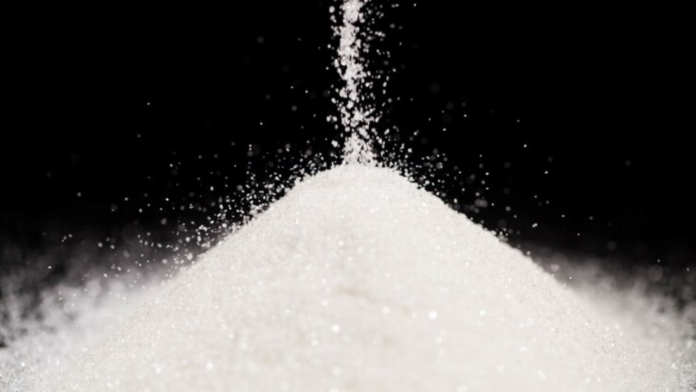The shortage of road salt, particularly affecting regions in the United States and Canada, is a pressing issue this winter. With snowstorms becoming increasingly frequent, the demand for road salt has skyrocketed. This has created logistical challenges and had significant implications for road safety and maintenance. Let’s explore the causes, impacts, and solutions for this salt shortage.
Causes of the Salt Shortage
To truly grasp the scale of the current salt shortage, we need to understand the root causes. Several factors have converged to create this predicament.
Labor Disruptions and Production Challenges
One of the most significant factors contributing to the salt shortage is labor disruptions. At the heart of this issue is a labor strike at the Compass Minerals mine in Goderich, Ontario. This is one of the largest salt suppliers in the world. The strike has drastically reduced the production of salt, creating immediate supply woes. Additionally, operational challenges like equipment issues have compounded the problem, leading to severe delays in salt supply points.
Supply Chain and Contractual Priorities
The supply chain complexities and contractual obligations have further strained salt availability. Municipalities and state governments have contracts in place to ensure that roads are kept safe during winter. Naturally, these obligations have taken precedence, which means smaller buyers and private contractors find it hard to access the needed salt. This prioritization leaves them scrambling for alternative suppliers, often from international sources, adding layers of complexity and cost.
Increased Demand Due to Weather
The demand for road salt has also been significantly impacted by the weather. With an increase in storm activity and more frequent forecasts of snow, the need for salt has never been higher. This unprecedented demand has revealed the inadequacy of the existing supply, exacerbating the crisis. When roads aren’t adequately treated with salt, the risk of accidents and travel disruptions increases, impacting daily life and economic activities.
Impact on Pricing and Availability
The shortage of salt is not just a supply issue; it’s also affecting prices and availability across several regions.
Price Escalations
The direct consequence of the salt shortage can be seen in skyrocketing prices. In some areas, prices have surged dramatically from $45 per ton to as much as $110 per ton. This represents a price increase of over 100% compared to previous seasons. Such hikes place a heavy financial burden on municipalities and private contractors. High costs make it challenging to maintain road safety during the winter months.
Availability Constraints
Regions like Northeast Ohio and upstate New York are currently experiencing severe salt shortages. To combat this, municipalities are forced to procure salt from out-of-state or international suppliers. This relocation process is not only costly but also logistically challenging, leading to further delays and increased prices. Many smaller towns and private entities find themselves unable to compete financially, resulting in limited salt availability for essential road maintenance.
Strategies to Address the Shortage
While the salt shortage presents significant challenges, there are strategies to alleviate its impact on road maintenance and safety.
Conservation and Optimization of Salt Usage
Conservation is a crucial strategy in handling the current salt shortage. Snow and ice removal businesses are encouraged to prioritize plowing before salting. This reduces the amount of salt needed for effective road treatment. Mixing salt with sand or other alternative de-icing agents like beet juice-based solutions or brine pre-treatment methods can help optimize salt usage.
Seeking Alternative Suppliers
In response to domestic supply constraints, municipalities and businesses are eyeing international suppliers as alternative sources of salt. For instance, salt imports from countries like Chile are being explored despite the challenges of costly logistics. Shipping and transportation from overseas suppliers involve a hefty price tag. Yet, they provide a potential solution to the immediate shortage issue.
Infrastructure and Resource Adjustments
Making adjustments in infrastructure and resources is another way to manage the salt shortage. Some regions have invested in larger salt storage facilities, ensuring an adequate supply in times of need. Additionally, the implementation of brine systems in snow removal trucks can help reduce the quantity of salt used. Such systems allow for more efficient and effective road treatment in winter.
Long-Term Implications
The salt shortage isn’t just a temporary challenge; it also points to significant long-term implications.
Climate Change and Future Predictions
Climate change is leading to unpredictable weather patterns. This makes it increasingly difficult to forecast the amount of salt required each winter. The unpredictability may result in more frequent and severe shortages in the future. Long-term planning and strategic adaptations will be essential to counter these challenges and ensure road safety.
Environmental and Financial Concerns
The extensive use of rock salt presents environmental concerns, as it poses risks to water quality and wildlife. This predicament pushes the need for alternative de-icers, like calcium chloride, which are more environmentally friendly. However, these alternatives are also more expensive. Financially, the burden of maintaining road safety in the face of intensifying weather events is expected to grow as climate change progresses.
Conclusion
The current salt shortage is a multifaceted issue driven by labor disruptions, operational challenges, high demand, and supply chain complexities. Addressing this issue requires a combination of strategic conservation, seeking alternative suppliers, and infrastructure adjustments. As we navigate this challenge, long-term planning and adaptability are crucial to managing the impacts of climate change and ensuring road safety in the future. For more insights on how businesses are managing similar supply chain challenges, visit Daily Business Voice.
By understanding the causes, impacts, and strategies surrounding the salt shortage, we can better prepare for the challenges ahead. Our roads play a vital role in our daily lives, and ensuring their safety is of utmost importance. Strategic thought, innovative solutions, and forward-thinking will help us overcome this challenge while keeping our roads safe and well-maintained.
